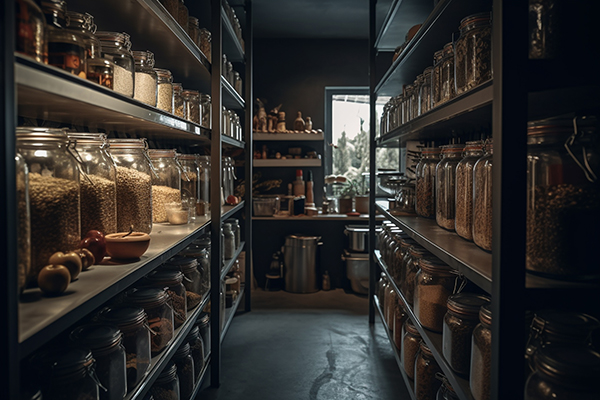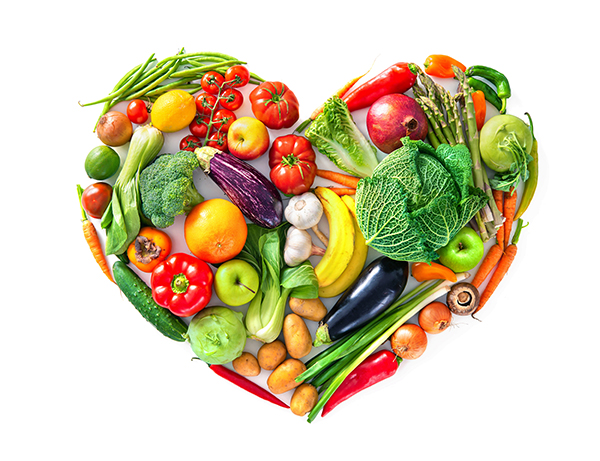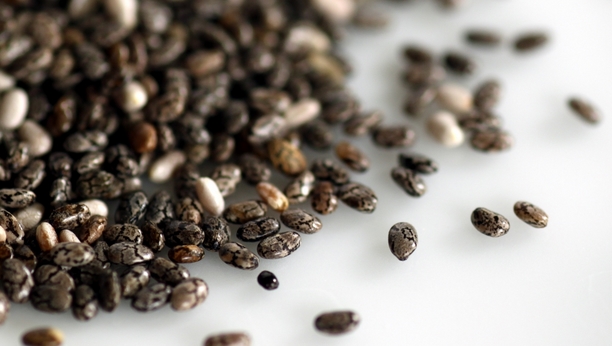 Parler
Parler Gab
Gab
- Many ultra-long-lasting foods like hardtack, honey, and pemmican have been trusted for centuries by indigenous cultures and military forces.
- Proper storage (vacuum-sealing, oxygen-free containers, cool/dark environments) is key to maximizing shelf life.
- These foods aren’t just survival rations—they’re versatile, nutrient-rich, and can be integrated into everyday meals.
- Modern processed foods pale in comparison to these traditional staples, which prioritize real nutrition over corporate profits.
- Preparedness isn’t paranoia—it’s reclaiming self-reliance in an era of engineered dependency.
Forgotten survival foods that defy decay
The following foods are tried and true survival foods.Hardtack: The original survival bread
Dating back to ancient sailors and Civil War soldiers, hardtack—a simple mix of flour, water, and salt—is virtually indestructible. Stored in airtight containers, these dense crackers remain edible for centuries. Unlike modern processed breads laden with preservatives, hardtack’s longevity comes from its lack of moisture, making it resistant to mold. Historically, soldiers would soften it with coffee or water, but today’s preppers use it as a base for hearty trail snacks or emergency rations. Its blandness is its strength; when flavored with honey or pemmican, it transforms into a calorie-dense survival staple.Honey: Nature’s eternal sweetener
Honey’s antimicrobial properties and low moisture content make it the ultimate pantry survivor. Archaeologists have found 3,000-year-old honey in Egyptian tombs still perfectly edible. Raw honeycomb, sealed in beeswax, offers even greater longevity. Beyond sweetness, honey boasts medicinal benefits—wound-healing, cough suppression, and immune support—making it a dual-purpose treasure. While commercial honey is often adulterated with syrups, raw, unfiltered honey from local beekeepers ensures purity. Just remember: never feed honey to infants under one year due to botulism risks.Pemmican: The Native American superfood
Pemmican, a blend of dried meat, rendered fat, and berries, sustained indigenous tribes through harsh winters. Properly prepared, it lasts 50–100 years, offering a powerhouse of protein and calories. Unlike modern jerky loaded with nitrates, traditional pemmican uses natural preservation methods. During the Cold War, U.S. military planners studied pemmican for “Doomsday Rations” due to its unmatched shelf stability. Today, it’s a favorite among hunters and preppers—compact, nutrient-dense, and adaptable to modern meals.White rice: sustenance in uncertain times
Vacuum-sealed white rice, stored oxygen-free, can endure over a century. Unlike brown rice, which spoils faster due to oils in the bran, polished white rice’s simplicity makes it a storage champion. It’s the backbone of survival meals—pair it with beans, powdered eggs, or dehydrated vegetables for complete nutrition. Pro tip: Add bay leaves to storage containers to deter insects.Salt: The mineral of life
Pure sea salt or rock salt never spoils. Beyond seasoning, it’s vital for food preservation, electrolyte balance, and livestock care. Salt blocks attract game for hunters, while iodized versions prevent deficiencies. Historically, salt was currency; today, it’s a survival non-negotiable.Pure maple sugar – A centuries-old sweetener
Unlike maple syrup, pure maple sugar is crystallized, giving it exceptional shelf stability—up to a century when stored in airtight containers. It’s a natural alternative to refined sugar, rich in minerals like manganese and zinc. Because it dissolves quickly, it works well in baking or beverages. Some rural communities in Vermont and Quebec still rely on maple sugar as a long-term sweetener, demonstrating its historical resilience. Whether sprinkled over oatmeal or used in preserving fruits, its versatility rivals conventional sugars.Dehydrated beets – Iron-rich and resilient
Properly dehydrated beets retain iron, potassium, and antioxidants, lasting up to a century if stored correctly. They can be rehydrated for soups or ground into powder for smoothies and baking. Many health enthusiasts prefer them over canned versions due to their concentrated nutrients and minimal storage space. Industrial food scientists confirm that dehydration halts microbial growth almost entirely. Combined with vacuum sealing, dehydrated beets defy spoilage longer than most fresh produce.Fermented soy sauce – The probiotic preservative
Authentic fermented soy sauce—made from soybeans, wheat, salt, and koji mold—can last a century thanks to its high salt content and fermentation process. Unlike mass-produced versions, traditionally brewed soy sauce contains probiotics that aid digestion. Researchers in Japan have found century-old barrels of soy sauce still microbiologically sound. Its umami depth enhances everything from stir-fries to preservation techniques like pickling. Proper storage in dark glass bottles extends its viability indefinitely.Ghee in tins – Clarified butter that never spoils
Ghee, or clarified butter, removes milk solids, allowing it to endure decades without refrigeration when sealed in tins or foil. Ancient Ayurvedic texts describe ghee as a food that “grows stronger with age.” High smoke point makes it ideal for frying, while its rich flavor enhances bread and lentils. Archaeologists have uncovered edible ghee in Egyptian tombs, still safe to consume after millennia. Modern homesteaders stockpile it for both cooking and traditional medicine.Sprouting seeds – Decades of renewable nutrition
Seeds like alfalfa and mung beans remain viable for decades when stored in Mylar bags with oxygen absorbers. When soaked, they sprout into nutrient-dense greens packed with vitamins A, C, and K. Off-grid farmers and survivalists rely on sprouting seeds for continuous harvests indoors. Historical records show ancient sailors carried these seeds to prevent scurvy on long voyages. Today, they're a key component of "living food" stockpiles, ensuring fresh produce even in emergencies.Lentils – The protein-packed perennial
Dry lentils, impervious to spoilage in airtight containers, provide protein, fiber, and iron indefinitely. Unlike beans, they cook quickly without soaking, making them ideal for fast, nutritious meals. Archaeologists have unearthed ancient lentil stores in Mesopotamia still intact. Freeze-dried versions amplify shelf life further, but even raw lentils endure decades in dry storage. Their versatility in soups, curries, and salads makes them indispensable in long-term food planning.Non-fat cocoa powder – A century of chocolate flavor
Pure cocoa powder, devoid of fats and sugars, lasts 80 to 100 years when vacuum-sealed. Its alkalinity preserves it, unlike milk chocolate, which spoils quickly. Soldiers and explorers have relied on cocoa for morale-boosting drinks during extended journeys. Nutritionists note its antioxidants and magnesium content remain stable for decades. Mixed with powdered milk and stored in small portions, it ensures chocolate cravings are satisfied indefinitely.Wheat berries – The flour of the future
Whole wheat berries, when stored properly, last over a century before grinding into flour. Unlike milled flour, which oxidizes rapidly, intact kernels resist spoilage. Archaeologists have found viable wheat in Egyptian tombs, still viable millennia later. Modern homesteaders use grain mills to produce fresh flour on demand, bypassing commercial shortages. Kept cool and dry in Mylar bags, wheat berries serve as the foundation for bread, pasta, and porridge indefinitely.Coconut oil – The multi-purpose super fat
Virgin coconut oil lasts years without rancidity, thanks to its high saturated fat content. Beyond cooking, it serves as a skin moisturizer, wound salve, and even candle fuel. Pacific Islanders historically stored it in clay pots for decades. Modern research confirms its antimicrobial properties aid in food preservation. Stored in dark glass away from heat, coconut oil remains useful long after most oils spoil. From maple sugar to wheat berries, these ten foods demonstrate how proper storage extends viability far beyond common expectations. Whether preparing for emergencies or minimizing waste, these shelf-stable staples offer resilience in uncertain times. Combining historical wisdom with modern techniques ensures a pantry that lasts generations—long after fresh groceries would perish. Sources include: AskaPrepper.com Enoch, Brighteon.ai Naturalpedia.com Survival.newsSurvival 101: A comprehensive guide to staying safe during a school shooting
By Zoey Sky // Share
Historic flooding in central Texas brings SHAMEFUL political exploitation
By Willow Tohi // Share
Health Ranger Report: Steve Slepcevic shares insights on navigating chaos during disasters
By Kevin Hughes // Share
Ancient chia seeds reduce modern heart disease risk
By newseditors // Share
Trump’s tariffs spark global trade revolt: BRICS nations accelerate dollar-ditching plans
By finnheartley // Share










